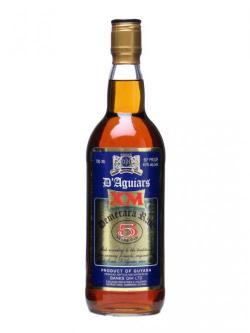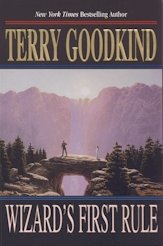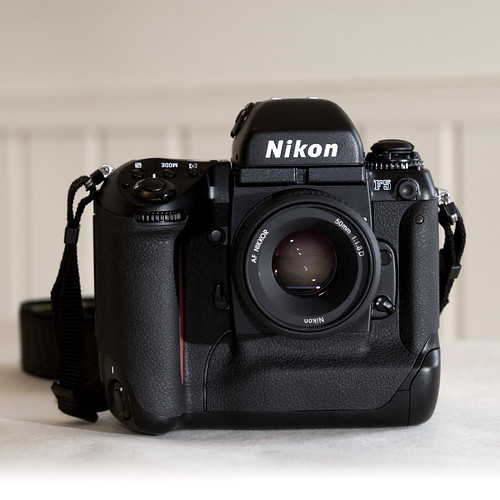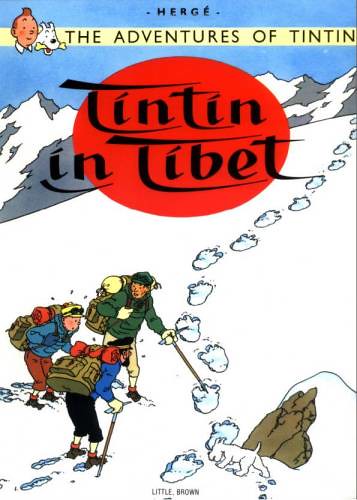
I really don’t like the rums listed here.
It’s appreciated that if there ever was a list to piss people off, this is it. Maltsters will snicker into their sporrans to see one of their pet peeves taken down a few notches. Rum pundits will in turns be offended or delighted, depending on their viewpoint and their own predilections for rums. Others will nod (I hope). We do ten best lists, or top ten lists or “best of whatever” lists – not often that you see a list of the bottom feeders (although I’m definitely not the first).
The genesis of this list is actually not in any kind of rabid and face-melting dislike – more in my snarkiness at being taken for a ride with overpriced crap, or with crap period. Some of these should come with advisories.
It’s kind of anticipated that the (actually rather short) list presented here will raise some eyebrows, please a few, and incur the wrath of others, and that’s okay. As I’ve mentioned before, a review of any kind involves – as it must – an element of personal opinion and subjectivity. This is mine. You can take it as seriously as you like, or laugh at it. Hopefully a bit of both

1. Pyrat’s – both the XO and the Cask 23. Not deserving to be called rums, these drinks are more like liqueurs. The orange nose and forceful taste overwhelms all others. The greatest disappointment must be the Cask 23, supposedly originating from DDL’s high ester still, but at end is just a well dressed tart with sweaty armpits, costing way over her true value. That’ll teach me to buy something just ‘cause it’s in a glass case.
Nose: Orange. Lots of orange. We’re talking Florida on steroids here.
Taste: Orange with an orange hint and tangerine citrus cricket bat to the face
Fade: Short and bitchy for the XO; smoother and longer for the Cask 23. Hints of orange
Assessment: just a shade too much citrus in there
Why I dislike it: overpriced, overhyped, and I really hate the orange. Telling me it comes from a high ester still with unique flavour profile doesn’t help me, unfortunately…it still tastes like…ummm…an orange.

2. Doorlys XO. Didn’t get this the first time, and after three more tries, I still don’t. Weak, pussilanimous wuss of a rum. It’s so low key that its piano seems to lack keys altogether. No yohohos, cutlasses or pistols here – at best you might say it’s the effete cabin boy in Captain Morgan’s galley, and to this day, I’ve never heard Clint’s comment bettered – this thing is the Prince Myshkyn of rums. For those who like delicate bouquets and subtle whiffs it may be the cat’s meow – me, I like my rums to be rums, and this ain’t it.
Nose: Huh? Oh yeah…some alcohol and sugar water
Taste: Faint caramel; after straining for half an hour, I might sense a seam of molasses in the bedrock of nothing-in-particular
Finish: Short, pointless, dreary
Assessment: Waste of my money. Too delicate and weak for a real rum. Any kind of mixer would be like a Buxton mosquito landing on a Bajan mosquito net…which is to say, too bad for the net.
Why I dislike it: simply too weak at everything. It doesn’t even work as a mixer, because anything you add to Doorly’s shreds it utterly. If I wanted anything this gentle or subtle, I’d take a glass of water and chuck a drop of Bacardi 151 into it.

3. Bundaberg. Even Aussies seem to frothingly despise the rum from Queensland. My friend Keenan said he’d rather eat curried dingo sh*t that try it again, and while I’m not quite that in hate with this raw, pestilential hooch, there’s no doubt in my mind that I’m glad I didn’t have to shell out for it, but he did. As I understand it, it’s still sitting on his shelf three years later…he may be waiting to paint his house and use it for a thinner, or feed to me on my next visit.
Nose: Curried dingo. Just kidding. Alcohol reek, rotting grapes, peeling cardboard
Taste: Horrible. A reek of cloying fly-infested sugar water left to stand in the outback for a day
Finish: sharp, crabby, disapproving – like my mother-in-law’s face after a two night pub crawl
Assessment: A rum only a mother could love.
Why I dislike it: taste is just too far in the outback for me

4. Kraken. Oh my God, what is it about this inky overproof that makes people go into transports of ecstasy over it? The excessive vanilla and flavourings, the sweetness, what passes for texture? The 46%? I’m at a loss to understand it. This is as commercial a rum as it’s possible to make from a base of alcohol to which additives are poured with the reckless abandon of a leaping base jumper. It’s neither fish nor fowl – you can’t really class it as a sipper since it’s too raw, and it’s too adulterated to be a mixer of any kind, so why even bother?
Nose: vanilla. That’s it
Taste: more vanilla, some liquorice, with a molasses background struggling vainly to emerge before being eviscerated by the spice
Finish: dark and strong and raw. This rum does not like you.
Assessment: mix if you must, enjoy over ice if you can. I’m avoiding it
Why I dislike it: cheap, hollow rum sold at a premium it doesn’t earn or deserve. It’s simply spiced itself out of existence without regard for true quality.

5. Momento. For a company that makes the much better Potter’s which has no pretensions to being anything but a cocktail base and a pub mixer (and a good one at that), this golden rum just doesn’t work for me. Bar rums are easy to make: this one achieves a kind of dizzying grandeur of badness even though it is rather cheap – and that may be its sole redeeming feature aside from the nifty bottle.
Nose: herbal, grassy, light fruits
Taste: Light, slightly dry, undistinguished. Not smooth.
Finish: short sharp jab to the schnozz.
Assessment: it’s too light to mix well, and therefore shares my main reasons for generally avoiding agricoles, which Momento seems to want to emulate (poorly) with this product.
Why I dislike it: just fails on all levels and even as a mixer I can’t really say it does anything for me. I tried it with just coke (how can anyone or anything mess up a simple Cuba Libre?) and even that didn’t work.

6. Ron Barcelo Anejo. Ron Barcelo makes some nice products – this, to me, isn’t one of them, and I can trace it right back to the 37.5% strength, which simply does not impart or share flavour that even a smidgen extra proof would. Sure it’s only $25 or so. But so what?
Nose: Faint caramel, bananas and a barely perceptible hint of coffee
Taste: Thin at best with molasses and some citrus that wasn’t sure it wanted to be there. It ended up bailing just as I managed to identify it.
Finish: Short, weak and seemed to be ashamed to be there at all: vanished like a fart in a hurricane.
Assessment: If you’re going to make a rum, for God’s sake make one. Don’t dumb it down or dilute it to catatonia: what on earth is the point of 37.5%?
Why I dislike it: I can’t get drunk fast enough, it does nothing for me neat, it can’t be properly mixed, it’s insulting to call it a chick rum, and it just doesn’t duel with your palate the way anything stronger would, should, and does.

7. XM Five year old. “‘Arry, ‘it ‘e ‘pon ‘e ‘ead wit’ a ‘ammer!!” I can hear my old time bush squaddies roar to a particularly large compadre we all shared (called “Biggers”) so he can donk me for my impertinence. Sorry guys, but it’s true. Drink this – neat or in a mix – and then switch to Bacardi or Appleton V/X or others. You feel the difference.
Nose: As scrawny and savage as an alley cat that found no mice. Sharp, searing nose of orange peel and maybe some burnt sugar
Taste: Vanilla, caramel, some kind of fruit jam (but not the kind your mommy made with such love, let me assure you)
Finish: The cat still doesn’t like you, and them claws is sharp on the back end.
Assessment: Cheap backdam hooch made for the bush is all it is. If you don’t care what you get drunk on, maybe this one will do you just fine. I know whereof I speak on this one, trust me.
Why I dislike it: It smacks of laziness and good-enough that offends me for some reason. We must move beyond such crap and demand that Banks DIH make better. If DDL can, why can’t they?

8. Whaler’s. This is a variation of the Kraken above, and when I say that the Kraken is marginally better, it edges out this one because the Whaler’s is just a liquid ethanol to which the mad scientists at their lab drunkenly added spices with the abandon of the Emeril on crack, without even the decency to pump up the volume with some oomph to maybe 45% or so.
Nose; Vanilla, as powerful as if it wanted to mug you with a brick-hard tub of Hagen-Dasz.
Taste: Raw, searing, oversweet, thin, vanilla-stoked, butterscotch-infused liquid vaguely tasting like it should be a rum, but wasn’t sure.
Finish: Short and harsh…I think I swallowed a dried stick of vanilla and it scraped my throat to shreds. My tonsils demanded a condom if I was to have more.
Assessment: This is a hollow rum, the first I’ve ever tried. “Rare, Reserve Dark Rum” the label describes it. Are you kidding me?
Why I dislike it: it seems crassly commercial to just buy some rum stock, run it through an industrial facility to add spices in an effort to beat out Captain Morgan, and sell it as some kind of classy product on that basis, with minimal ageing of any kind.
***
So there you have it. My list of eight peeves. Each reviewer, I think, has his own list of rotguts which he either felt he paid too much for, or which was advertised as something it was not, or was simply bad. Here are the ones I feel a dark burning resentment about. You may disagree, and that’s perfectly cool. I’m sure you have your own list of private dislikes.
A last word (and I feel it important that I say this, so bear with me)
I term myself a reviewer on the strength of tasting a whole lot of rums and writing about them in the best prose I can – some justification can be found in that my hard earned dollars are going into this exercise and that being the case, why shouldn’t I? My purpose is – in between other aspects of my life that take precedence – to entertain, educate, amuse, share my passion and perhaps put some facts out there in the public domain that others may use. (The fact that the ‘Caner site doesn’t garner a whole host of daily hits suggests not many people really care, but them’s the breaks).
Thomas Hardy said, in the field of literature, that “Compared to the dullest human being actually walking about on the face of the earth and casting his shadow there, the most brilliantly drawn character in a novel is but a bag of bones.” Same for reviews. And just because it is easy (and fun) to skewer a company’s rum does not invalidate their achievement in putting a product out there at all. Their money, time, effort and entrepreneurship are on the stand, every day, being judged. So it doesn’t matter how well I describe what I tasted, or how snarkily – what matters is that there are physical products out there that someone made, the making of which employs people, gives others some enjoyment, and affords writers like me the license to write our own bags.
Liking the rums or not, that achievement should be recognized. I may dislike the products listed here. This does not mean they are not worth more than my words designating them so.





















































